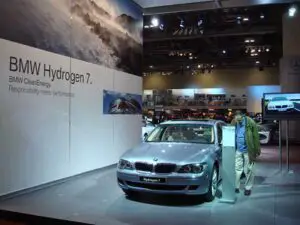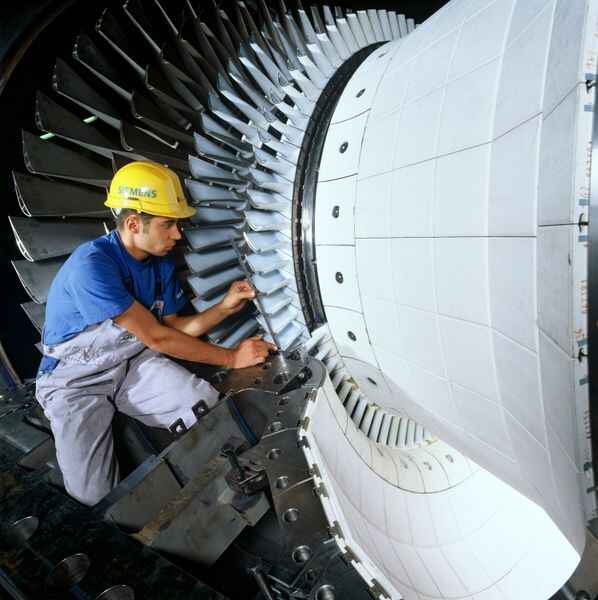5 Clean Transportation Examples Explained
Clean transport examples are; fuel cell vehicles based on green hydrogen, IoT-driven DERMS for automobile energy storage, electric car battery solar recharge, and carbon capture-integrated gasoline transport.
This article discusses clean transport examples, as follows;
1). Fuel Cell-based Green Hydrogen Vehicles (as one of the Clean Transportation Examples)
Green hydrogen can be used for vehicular transport because of its high energy density.
It must be noted that the adjective 'green' signifies that the hydrogen is derived from sustainable sources like biomass, water and renewable energy.
A most common source of green hydrogen is water electrolysis using clean energy resources like solar [8].
Hydrogen fuel cell vehicles represent a viable example of clean transport. They are generally based on electrolytic fuel cell technology and have minimal environmental impact, with no combustion or emissions [3].
Fuel cell cars may be of different designs and operational modes.
Like electric cars, they often constitute part of a distributed energy resource management system (DERMS), and represent a practical example of hydrogen energy storage in automobiles.
Fuel cell cars are often hybrid; relying on more than one energy resource or storage system.
Vehicles using the hydrogen fuel cell as an energy unit include some models of Hyundai and Toyota.

2). Electric Buses for Public Transport
Public transport in going electric in many developed and developing parts of the world. One of the means by which this is made possible is the electric bus.
Countries with electric buses in their public transport fleet include China, India, United Kingdom and United States.
The use of electric buses in public transport presents a major avenue for sectoral decarbonization and full establishment of clean transport, since electricity for recharging these vehicles can be generated by clean resources and technologies such as hydro energy.
Electric bus-based public transport can be managed using artificial intelligence and Internet of Things (IoT) application; which may be used to schedule the charging and commuting operations of electric bus fleets [1].
Generally, electric buses are adaptable and can be used effectively under various circumstances [4].
3). IoT-driven DERMS for Automobile Energy Storage (as one of the Clean Transportation Examples)
Internet of Things can improve clean transportation by effectively managing and coordinating the various aspects and components of transport systems, through data sharing.
One of the aspects of clean transport that can be effectively managed using IoT is energy. Here, a distributed energy resources management system (DERMS) which comprises of different electricity generation and energy storage technologies, can be monitored to ensure energy efficiency and minimal environmental impact [5].
IoT and DERMS integration can help in decision-making with regards to the best technologies and schemes to be used in clean transport [7].
4). Electric Car Battery Solar Recharge
The cleanliness of using electric vehicles is most assured when renewable, clean energy is used to generate electricity for recharging the batteries of these vehicles.
One of the most practical options among available clean energy resources for this purpose is solar.
Solar panels can be used to generate electricity through the photoelectric effect, and this electricity can be transmitted to charging stations for electric vehicles [2].
The use of solar for EV charging is not a new idea, as it has formed the core of many distributed-energy-resources and smart-grid-network plans in parts of the world seeking to establish green economy.
However, the practical capacity of solar systems is as of yet limited, especially with respect to the scale of electrification which the public transport sector demands. This means that implementation of the strategy will require either or both solar power augmentation and capacity improvement.
5). Carbon Capture-Integrated Gasoline Transport (as one of the Clean Transportation Examples)
Carbon capture in automobiles is a very important issue with regards to clean transport.
This is due to the role of vehicles in global carbon emissions, and the difficulty of a speedy eradication of fossil fuels as an automobile energy source.
While efforts to achieve energy transition are being made, it is therefore recommendable for carbon removal technology to be integrated effectively into transport, in order for the rate (and severity) of environmental degradation by fossil fuels to be reduced in the meantime.
Carbon capture can be used in cars by removing CO2 from exhausts, using small-scale adsorption and absorption technologies.
However, the practical implementation of this approach on a large-scale, is limited by the complexity of carbon capture itself.
For automobile-based direct carbon capture to be effective, major innovative improvements must be achieved whereby the scale of carbon capture technology is reduced without any impact on performance.
We do not capture car exhaust CO2, although it is possible to do so, because the mobility of vehicles and the complexity of the carbon capture system and process affect the reliability, performance and safety of this practice.
Additionally, carbon capture must be followed by near-instantaneous storage.
Since vehicular carbon capture will most likely yield continuous, small amounts of carbon, instantaneous storage here may not be practically or economically feasible, especially in the long term.
In spite of these, carbon capture can be integrated into the automobile sector at various stages and subsections of the transport process, including fossil fuel extraction and refining.
Studies have shown that direct carbon capture from car exhausts can achieve removal efficiencies of up to 90% [6].

Conclusion
Clean transportation examples are;
1. Fuel Cell-based Green Hydrogen Vehicles
2. Electric Buses for Public Transport
3. IoT-driven DERMS for Automobile Energy Storage
4. Electric Car Battery Solar Recharge
5. Carbon Capture-Integrated Gasoline Transport
References
1). Conti, V.; Orchi, S.; Valentini, M. P.; Ngiro, M.; Calò, R. (2017). "Design and evaluation of electric solutions for public transport." Transportation Research Procedia 27:117-124. Available at: https://doi.org/10.1016/j.trpro.2017.12.033. (Accessed 20 January 2023).
2). Erickson, L.; Ma, S. (2021). "Solar-Powered Charging Networks for Electric Vehicles." Energies 14(4):966. Available at: https://doi.org/10.3390/en14040966. (Accessed 21 January 2023).
3). Granovskii, M.; Dincer, I.; Rosen, M. A. (2006). "Environmental and economic aspects of hydrogen production and utilization in fuel cell vehicles." Journal of Power Sources 157(1):411-421. Available at: https://doi.org/10.1016/j.jpowsour.2005.07.044. (Accessed 21 January 2023).
4). Krawiec, S.; Łazarz, B.; Karoń, G.; Grzegorz, S.; Krzysztof, K.; Ryszard, J. (2016). "Urban public transport with the use of electric buses - Development tendencies." Transport Problems Volume 11(Issue 4):127-137. Available at: https://doi.org/10.20858/tp.2016.11.4.12. (Accessed 20 January 2023).
5). O'Neill-Carillo, E.; Lave, M.; Haines, T. (2021). "Systemwide Considerations for Electrification of Transportation in Islands and Remote Locations." Vehicles 2021, 3(3), 498-511. Available at: https://doi.org/10.3390/vehicles3030030. (Accessed 20 January 2023).
6). Sharma, S.; Maréchal, F. (2019). "Carbon Dioxide Capture From Internal Combustion Engine Exhaust Using Temperature Swing Adsorption." Frontiers in Energy Research 7:143. Available at: https://doi.org/10.3389/fenrg.2019.00143. (Accessed 21 January 2023).
7). Sudhagar, P.; Sridharan, K.; Nagarajan, S.; Sengeni, A.; Robertson, P. K. J.; Kuehnel, M. F.; Irabien, A.; Maroto-Valer, M. (2022). "Solar Hydrogen Fuel Generation from Wastewater—Beyond Photoelectrochemical Water Splitting: A Perspective." Energies 15(19):7399. Available at: https://doi.org/10.3390/en15197399. (Accessed 21 January 2023).
8). Thango, B. A.; Bokoro, P. N. (2022). "Battery Energy Storage for Photovoltaic Application in South Africa: A Review." Energies 2022, 15(16), 5962. Available at: https://doi.org/10.3390/en15165962. (Accessed 20 January 2023).
